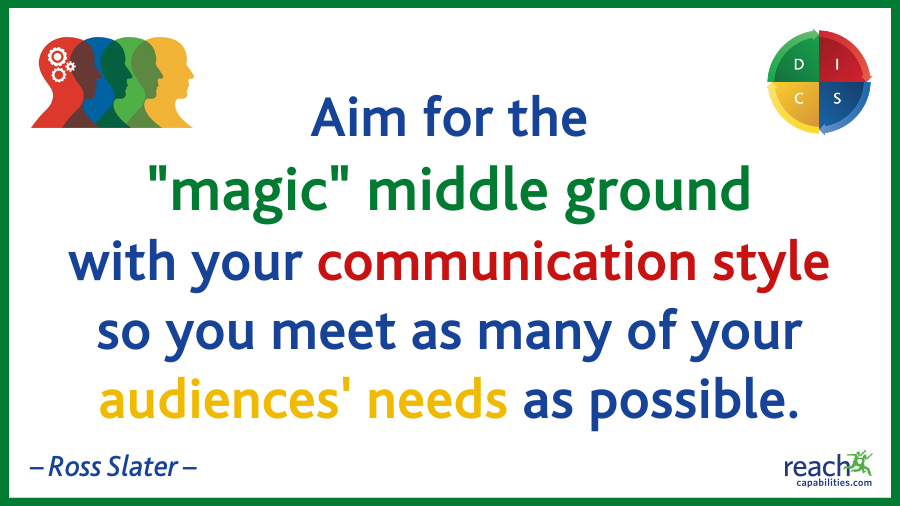
When you want to connect with your audience, whether it’s one person or a group of hundreds plus, there will be people with your natural style and others that are completely different. So how do you make sure you’re tailoring your presentation to each person’s needs without missing the mark with all of them? The answer, aim for the “magic” middle so you meet as many needs as possible. It’s not landing flat, but finding shared ground!
Reflecting on conative needs as measured by the Kolbe Index, it’s useful to balance the needs of all 4 Action Modes:
– for Fact Finder, be succinct (think PowerPoint with 2-3 bullet points per slide or better – just a photo), while offering the specific details in written handouts
– making jokes, such as “we’re close to our goal of $50K”, but then adding “for those of you who need specifics, we’re at $49,893.56” (remember to pause for the knowing laughter)
– for Follow Thru, explain the general flow of your argument/plan and the expected end result, while offering options to deviate/skip steps as needed
– for Quick Start, provide an exciting vision while making sure proper precautions will be taken to ensure success
– for Implementor, talk about the concept and use the PowerPoint, handouts, and even physical expressions to illustrate the tangible aspects of the message
Using the DISC Communication Model (Outgoing vs. Reserved and Task-Oriented vs. People-Oriented), a Level Blend approach that veers a bit into high I territory is best:
– in large presentations, high I is often an expected presentation style (think comedians, inspirational speakers, etc.) as you’re usually trying to influence and persuade others
– but the best high I’s don’t go overboard and regularly move back to the centre by pausing and bringing their energy back to a more moderate level
– plus adding key DISC words is very important – suggest the audience can take as much personal control as possible which appeals to the high Ds; provide the high Ss with the ways this will support others; give the high Cs the expectation of high quality results where they can individually contribute
Much of the success is to know and use your own strengths while modifying enough to make sure everyone else feels included in your “tent”.